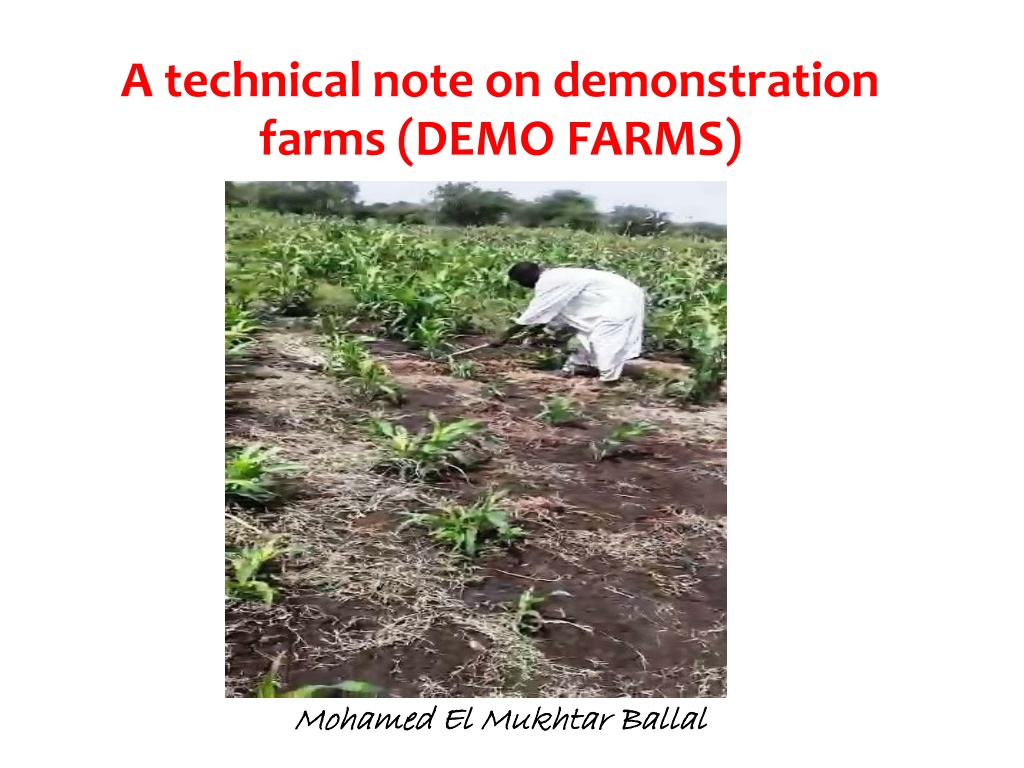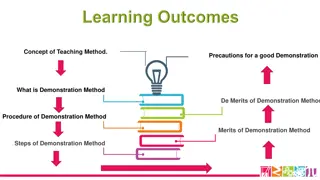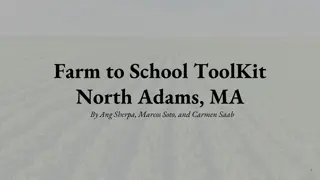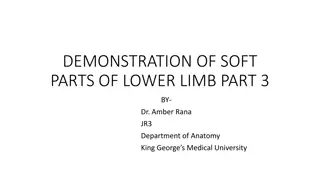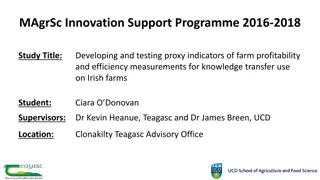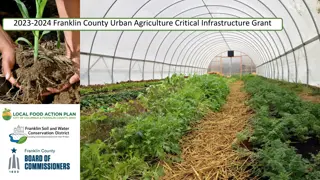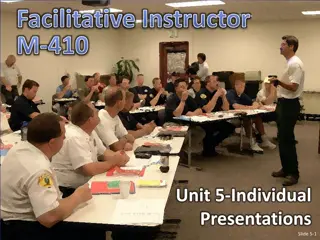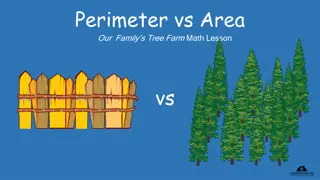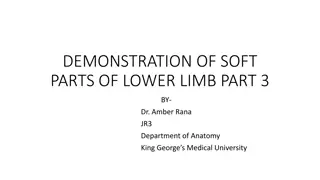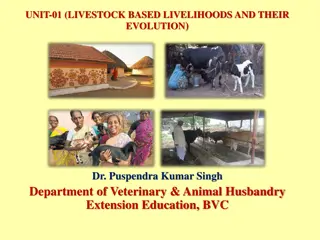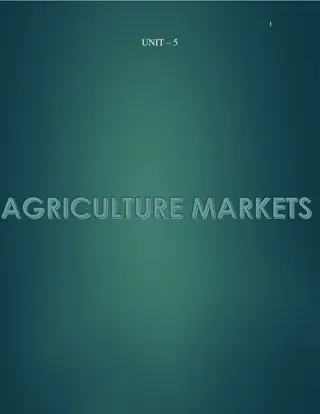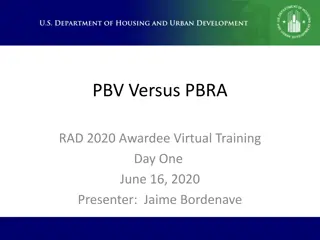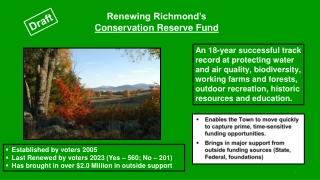Understanding Demonstration Farms and Their Objectives
Demonstration farms (DEMO farms) play a crucial role in showcasing improved agricultural practices to farmers. These farms are used to educate, share ideas, and demonstrate the benefits of new crop varieties and techniques. By promoting the use of innovative methods, DEMO farms aim to increase farmers' income, enhance production, and strengthen community relationships. They serve as practical learning platforms for farmers to adopt modern technology and sustainable practices. Establishing DEMO farms involves selecting willing participants, providing necessary resources, and monitoring progress closely.
- Demonstration Farms
- Farming Techniques
- Agricultural Education
- Sustainable Practices
- Technology Adoption
Download Presentation

Please find below an Image/Link to download the presentation.
The content on the website is provided AS IS for your information and personal use only. It may not be sold, licensed, or shared on other websites without obtaining consent from the author. Download presentation by click this link. If you encounter any issues during the download, it is possible that the publisher has removed the file from their server.
E N D
Presentation Transcript
A technical note on demonstration farms (DEMO FARMS) Mohamed El Mukhtar Mohamed El Mukhtar Ballal Ballal
Concept and Concept and definition A DEMO farm is a portion of the farmer's field in which the technological packages are applied by the farmer under the supervision or guidance of the expert or extension specialist. Also defined as a plot or field that is used for teaching, sharing ideas and showcasing a proven agricultural practice or an improved variety of crop and/or tree. The DEMO farm is used to convince the farmer of the usefulness of the improved variety or practical methods for increasing production and improving its quality. Thus increasing the farmer s income and improving his livelihood. DEMO farms are considered one of the most effective extension methods in teaching, providing information and opportunities to improve farmer skills and change their attitudes. DEMO farms are considered one of the main activities of farmers' field schools.
Objectives of DEMO farms To encourage farmers to use improved and/or resistant crop and /or tree varieties and various control methods. To provide evidence in the farmers' fields of the feasibility of cultivating an improved crop variety or applying improved husbandry practices giving the farmers the opportunity to observe themselves and compare with their own varieties or practices. To apply the principle of learning through practice.
Objectives of DEMO farms (Cont.) To strengthen the relationship between farmers, extension agents, specialists and researchers. By integrating trees, DEMO farms reduce LD, mitigate C02, diversify products, increase income improved livelihoods
How to come up with a DEMO theme? Identify the problem in a particular area using participatory approaches such as focus group discussions, ranking, problem analysis etc. Problems can be initially identified by farmers. Improved technology that needs to be transferred to farmers for adoption.
Basis for establishing DEMO farms To achieve the objectives, the following must be taken into account: Farmers understand the objectives of the DEMO farms, their foundations, and how to monitor and evaluate them. Selection of farmers who have the desire and full willingness to establish a DEMO farm and implement all operations as required. The DEMO farms should be close to the sites of the farmer's schools in order to facilitate their regular follow-up. Providing the requirements for establishing DEMO farms such as water, suitable soil, and a program of work, follow-up and evaluation. Farmers carry out all agricultural operations and record observations and evaluations under the supervision of their facilitators. Comparing these DEMO farms with farmers' fields and research experiments to ensure their economic feasibility. Regular Collection of data from` the DEMO farms.
Size of a DEMO farm According to Crop Demo Guidelines set by FAO, UKaid and Zimbabwean government, the recommended size of a DEMO farm is 0.1 0.5hectare. According to ARC General Directorate of Technology Transfer and Knowledge Management, the recommended size of a DEMO plot is 0.42 hectare (1.0 feddan). The size of the DEMO farm used by ARC in the target areas for the Strengthened Protected Areas System and Integrated Ecosystem Management in Sudan was increased to 1.0 hectare to cater for integrating gum Arabic trees (Acacia senegal).
Justifications for using one hectare-size DEMO farms: The standard size of a DEMO farm is 0.1 0.5hectare. The DEMO farm should be small enough so that crop and/or tree recommended technical packages can be strictly, precisely and efficiently performed. The DEMO farm should be relatively small to ensure easy management, security/protection and movement within the farm. Rigorous establishment of DEMO farms will render them suitable extension sites during field days or as sites for farmers field schools.
Justifications for using one hectare-size DEMO farms (Cont.): The total average land area owned by the targeted pioneer farmers at Gedarif target villages is 4.2 ha/farmer. Hence, the farmers do not own such large farms to allocate 5.0 hectares as DEMO farms (Table). Usually a farmer does not put all his farm under demonstration because he also needs to cultivate other crops and may need to manage his land, other than DEMO farm, the way he likes. The farmer needs about 30 days to conduct necessary cultural practices to establish a DEMO farm of 1.0 ha size. Hence, it seems illogical to allocate all his time managing an area five times the one- hectare farm! Impossible Expected output should be measured by ADOPTION and TRANSFERING/ SCALING OUT TECHNOLOGY and not by AREA OF DEMO FARM/FARMER
Yield of improved sorghum variety (Wad Ahmed) at El Gedarif in 2022. Farmer Village Yield of local sorghum variety Sifera (Kg/ha) NA Yield of improved sorghum variety WAD Ahmed (Kg/ha) 1066.0 % increase Remarks Haidar , M, Ali1 Noor Al Madina Flooded Hawa Adam Ain Al Jamal NA 93.0 Flooded Osman Idris Al Hino Al Shitib 178.0 488.0 174 Flooded Abdalla, M, Ali Al Hino Alazrag 178.0 1111.0 524 Flooded
